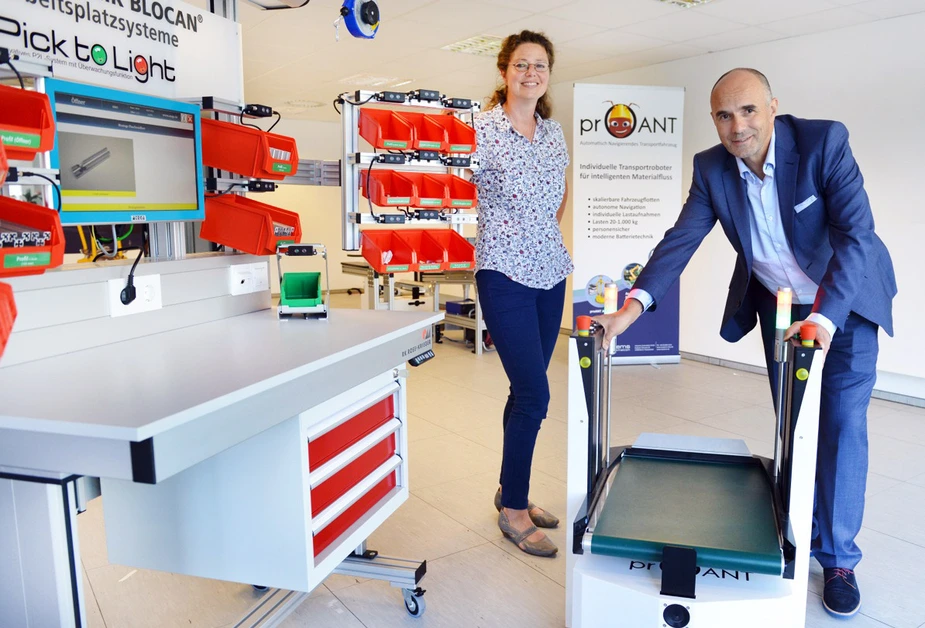Autonomous Robots
All things are in motion at the new showroom of the company “InSystems Automation”
If you want to see a transport robot from up close, the showroom of the company “InSystems Automation” is the place to go. Thanks to built-in lasers, the robots move around autonomously. The company also uses the room to showcase an assistance system for the manual assembly.
We see a robot cautiously moving through the room. It looks like a photocopier on wheels – with a few more flashing lights for good measure. The machines are actually built for the automatic transport of materials. The showroom of the company “InSystems Automation GmbH” was opened on the 1st June. Since then, curious students and passers-by drop in to watch the transport robots move around assiduously.
”Many of our customers wanted to touch the robots and see them move,” says Henry Stubert, the manager of InSystems. Their showroom is the first one presenting “Industry 4.0” technology in Berlin, a recent buzzword that encompasses solutions for industrial manufacturing which use information and communications technology.
The transport roboters of the “proANT” system are built according to customer requirements. Customers include manufacturers of household appliances, cosmetics, and printing products. The existing models can transport a maximum load of 50 to 200 kilograms. They are powered by a lithium-ion battery.
The robot’s navigation system is completely new, Stubert tells us: “Previous transport vehicles used induction loops in the ground or reflectors.” With proANT, a laser attached to the front of the robot scans its surroundings; some models are additionally equipped with a 3D camera. After “looking at” the whole room, the robot creates a map which he uses to navigate. Once its targets are programmed, the robot drives autonomously. It moves at up to 1.5 metres per second – which is roughly walking pace. The robot can detect a human crossing its path using its laser and will stop immediately. The robots are connected to a guidance system via WiFi that works like a taxi dispatcher. If many vehicles are on the move, they communicate to avoid traffic jams.
The showroom is not only for presentation, but also serves testing purposes. The robots are on the move around the clock and are watched by a camera. Errors can quickly be detected this way.
The company also uses the showroom to present an assistance system for manual montage. “Pick-2-Light is faster and safer than before,” Susanne Dannat tell us. The engineer is one of 46 company employees. The “Pick-2-Light” concept: after choosing the product one wants to build, a screen displays all the required components and how to put them together; small lights on the compartments help to find the components. Infrared light sensors, developed by the company, record every access and a warning light goes off when a mistake is made. An additional confirmation key is no longer needed. According to Dannat, after a day’s training, even unskilled workers are fully familiarised with the system. Pick-2-Light is especially suitable for putting together products in small quantities, but with great variety. The system is used by manufacturers of door locks, fittings, small engines, safety switches, and the auto industry. Stubert tells us that the company has been on Campus Adlershof for 16 years. The native Berliner now lives in Rudow. He likes taking the bike to work. Despite being a computer scientist by trade, bike riding, especially with a racing bike, is his hobby.
Stubert is very happy about the ideal location of the company’s showroom. A visitor to the tech trade fair IFA Berlin dropped in the other day because his hotel was just around the corner. A day later, his company called and said they were interested in their transport robots.
By Sven Titz for Adlershof Journal
